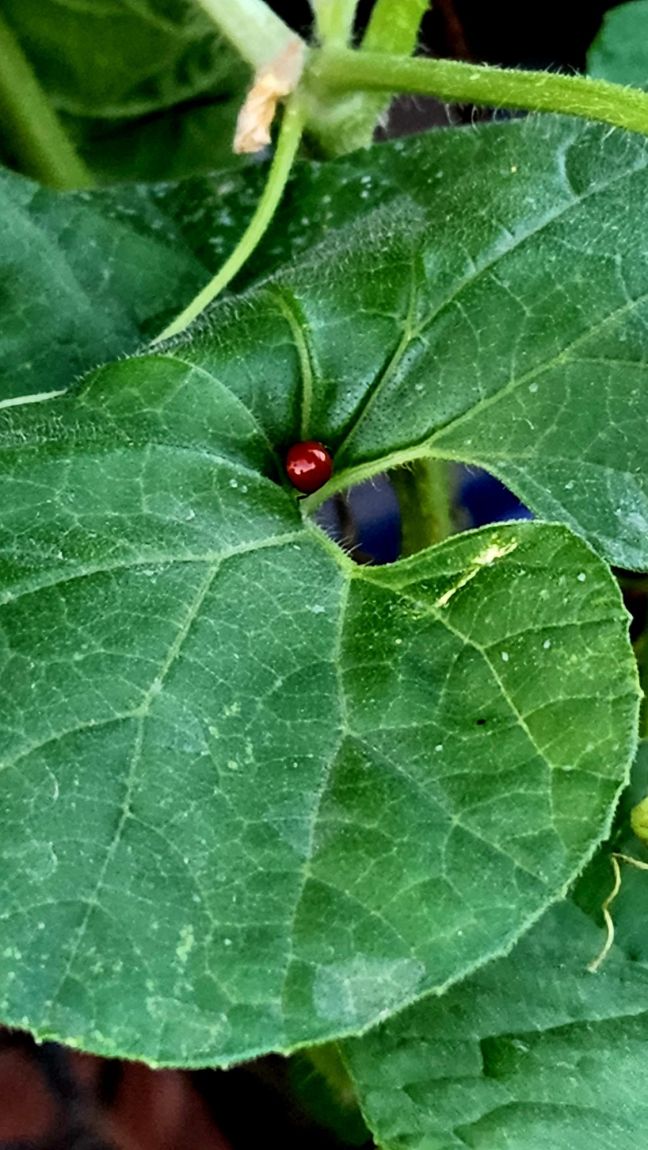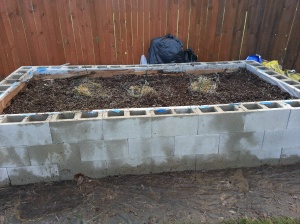

This is the fourth and final installment of my beginner gardening tutorial. For this class I decided to list some of my favorite books and growing aides. The book list is by no means exhaustive but I have some that have truly helped me form the backbone of my gardening approach. These products have definitely helped me combine some key gardening concepts that I have incorporated into my understanding of soil, compost, growing, harvesting and disease/pest control.
Find the first three classes here:
Beginning Gardener: Class 1
Beginning Gardener: Class 2
Beginning Gardener: Class 3
One of the first things I suggest is learning about what is on the cutting edge of gardening ideas. Thoroughly investigating several new concepts helped me merge and arrange them into what would work the best for me and my local growing conditions. The first idea is something I saw emerge a few years ago to help with dry/poor soil growing conditions. This was developed in Africa and is called keyhole gardening. This is a really good video about how to create one of these beds and I recommend this video for anyone creating raised beds. We are all aware of water usage limitations and creating a low water bed is not only smart for those of us in high heat/dry areas but for anyone who wants to cut down on supplemental water usage. The center of these beds have a compost area and this compost feeds the bed and offers an easy way to keep the bed hydrated.
https://youtu.be/ykCXfjzfaco
Another great idea is hugelkultur. This is my favorite article explaining this idea. It is super popular among organic gardeners and it is one of three ideas I combined to create my own version in my raised beds. Hugelkultur
The third idea I used for my beds includes a worm tower. This is an “in place” compost area similar to keyhole gardens as far as feeding beds but also incorporates worm castings as fertilizer. In Bed Worm Tower
Hugelkultur/Keyhole Garden: Bridging Ideas
You can see my two beds I created with the Hugelkultur/Keyhole/worm Tower ideas (I’ll call them the HKT beds from here on.) If I were to make a third bed I would make it like the first one I made but with thicker ply plastic or seal the inside surface of the cinderblocks. HKT beds:
Now I will move on to my three favorite books for growing edibles. These each contain key concepts that I rely on and that are explained in an engaging and interesting way.
The first is by John Jeavons. It details his method of soil building. This was the first book that I bought that turned my ideas about gardening on end. He teaches how to build soil over years with products you grow rather than purchase. He advocates double digging which originated in Europe. If you have ever seen formal European gardens, with their lush beautiful plantings you can duplicate that with his methods. Further into his book you will find the dietary breakdown of the crops you are growing and how to plan for a self sustaining vegan diet. A lot of what is in his book relies on you agreeing to his lifestyle choices but I found the detailed breakdown of information extremely helpful in understanding the relationship with soil, the ways he maintains his soil and how that affects his crops. On top of that, he lists how to live off of just your garden and what each plant provides as far as nutrition. Understanding what nutrients each vegetable I grow has and how to balance them to create a healthy diet, created a deeper understanding of my crops and what I needed to focus on to create a balanced diet (not only in my garden, but in my purchases at the grocery store as well.) This is good information for our current times: where food shortages and supply chain disruptions are looming in the near future. There are already issues with meat, where the government is instructing ranchers to cull their animals. With the lockdowns there are going to be changes coming. You can’t shut the world down for months without repercussions.
This is his site: http://www.johnjeavons.info/ His book is called How To Grow More Vegetables (Than You Ever Thought Possible On Less Land Than You Can Imagine) It’s a pretty bold title, but he delivers on it. I think this is a wonderful primer for anyone who wants to soak up information from decades of research and trials that this amazing gardener has accumulated.
The second book that I recommend is by Rosalind Creasy. Her book Edible Landscaping is a thick bundle of incredible information, again: by a gardener who knows her stuff. She explains her ideas in a beautifully illustrated book. To Rosalind there is no such thing as a separation between flowerbeds and vegetable beds. All plants are used for their form as well as their food potential. She breaks down the nice-neat barriers that formal gardens traditionally employ and she blends them into a seamless combination that will inspire you. The photographs she uses to tell her story will make your jaw drop. I frequently found myself thinking: “Wow, why hadn’t I considered this before?”
The third book was another one that introduced ideas that I would not have come up with on my own (regardless of the length of my personal experiences.) It is called Gaia’s Garden by Toby Hemingway. Wow. Opened up a world of gardening knowledge with incredible new ideas and flooded my stored knowledge with tons of brand new avenues to explore. This is possibly the finest gardening book I own. The subject matter is home-scale permaculture and if you want to have an interdependent, completely self reliant gardening experience: this is the book for you. He teaches you how to create planting groupings (that he calls guilds) that feed and nourish each other, how to capture natural rainwater and to build your own micro-climate using a variety of techniques. With these, among other fascinating concepts, this book stands out as a revolutionary text.
I have many other books, but these three stand out among the others as having information that is interesting, complete and unique.
Now, the pièce de résistance: Ruth Stout search any and all information you can get on her. She was the first low maintenance Gardener. At 16 she was a prohibitionist and went out smashing saloons with the famous Carrie Nation, she later tried her first foray into no-till gardening when she didn’t feel like waiting for the plowman. She figured if asparagus doesn’t need tilling, maybe nothing does! Her methods do work and they work everywhere, you just need access to a ton of spoiled hay, straw or even carpet scraps. My favorite story of Ruth was when she figured out her husband knew she’d been gardening in the nude (she’d been doing it for years but didn’t know anyone knew.) Her husband noted she finished early that day. She asked him how he knew, and he told her that the line of cars, stopped on the highway, left earlier than usual! If you can find her video interviews they are so worth watching! I won’t put links in here because the videos don’t stay on YouTube very long (because of the royalties and her family, who would rather make money off of her ideas.) But if you can find them: She’s such a hoot!
Some things that I physically use in my garden: I love my stirrup hoe, it’s also known as an action hoe, for weeding. I use a miracle grow hose end sprayer with miracle grow fertilizer while watering and osmocote granules under new transplants and around established plants. I use a deep root feeder for my fruit trees with a deep root fertilizer. I use a lot of “Superthrive“. It claims it is a plant vitamin, rather than a fertilizer. Whatever it is: it definitely helps my plants and transplants. I originally bought a bottle at Walmart because the label’s advertising was so crazy that I thought: this has to work because no one would buy it for the crazy ramblings! (It looked like whoever made the old label might have been drinking some of the Superthrive!)
I make use of the copious amounts of rabbit poo that our pet rabbit supplies (you can’t beat a pile of rabbit poo under your squash plants!) I also occasionally use blood meal for nitrogen. If I need nitrogen for grass: I purchase chicken manure or when I need nitrogen for a large area of my garden: I use composted cow manure (look at bagged fertilizer. Lowe’s carries these types of fertilizer.) I have clay soil that has everything but nitrogen, so my fertilizing is very simple.
I love soaker (or weeping) hoses, newspaper mulch and landscape fabric. Milk jugs with peat plugs for seedlings, or tenting seedlings with milk jugs to shortcut hardening off. Those are some of my favorite hacks.
Short cut through hardening off
Personally: I love gypsum. I tend to use a lot of gypsum in my super heavy clay soils. I usually turn a bag into the soil with some peat hummus and compost and then cover it for a year. I come back to the area and the soil is completely different. What we have here is more like potters clay mixed with gravel. It’s some nasty stuff, but if I can get it to drain it becomes a great base.
As you can see, I use a variety of things that I have learned that work over the decades that I have gardened. I don’t have a high and mighty attitude towards fertilizers (although I try not to use any of the chemical ‘cides’ in my garden: herbicides, pesticides, fungicides.) I have found that adding cinder blocks around my garden areas provides shelter for spiders and other predatory insects. I almost never have pest problems. The only pest that is hard to deal with, for me, is spider mites. This is where Neem oil and insecticidal soaps come in handy.
As far as fungal problems I use my own mixes. Baking soda and water will get rid of powdery mildew, as will cows milk and water. Look for recipes online. Baking soda is residual though, so I try not to mess with it. I have a secret ingredient I add to my fungal sprays: oil of oregano. I use the aromatherapy grade. A few drops in the spray I have mixed up almost always relieves whatever fungal disease pressure I end up with.
I use dormant oil in the winter on my perennial fruits as well as copper spray to knock down overwintering fungal infections.
Regular cooking oil in water with a little bit of dish soap makes a fast and effective insecticidal soap. Neem oil will slow disease and bug reproduction but it takes time and repeated applications. If my garden goes south fast: Neem oil is not something that can correct a heavy infestation before my plants collapse. I prefer encouraging spiders, praying mantis, ladybugs and wasps instead.
I will stand outside and strip infected leaves of plants, that are sick with fungal disease, before spraying. If I see a leaf that is sick, I have found it is more helpful to remove it than to let it limp along while it infects the rest of the plant. I clean up the disease and then I spray. Down here (as it is in most moist, humid and hot areas) fungal pressure is a big deal. It helps immensely to plant varieties that are disease resistant.
This is the end of my fourth class. I hope it has been helpful and enjoyable. The first three classes are available here:
(As an Amazon Associate I earn from qualifying purchases.)


















I save these…